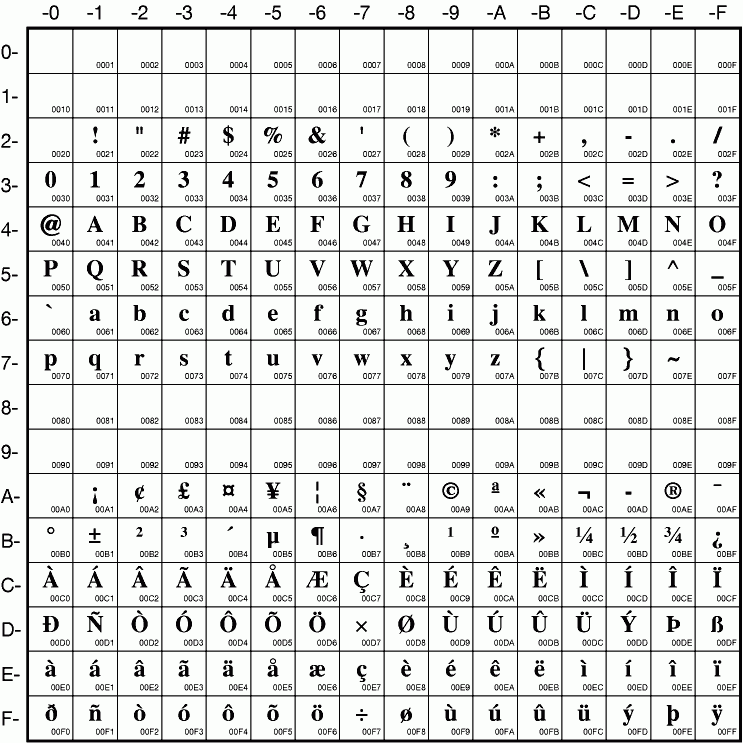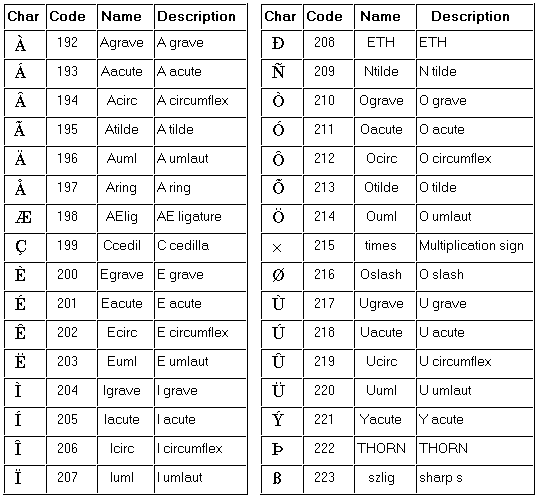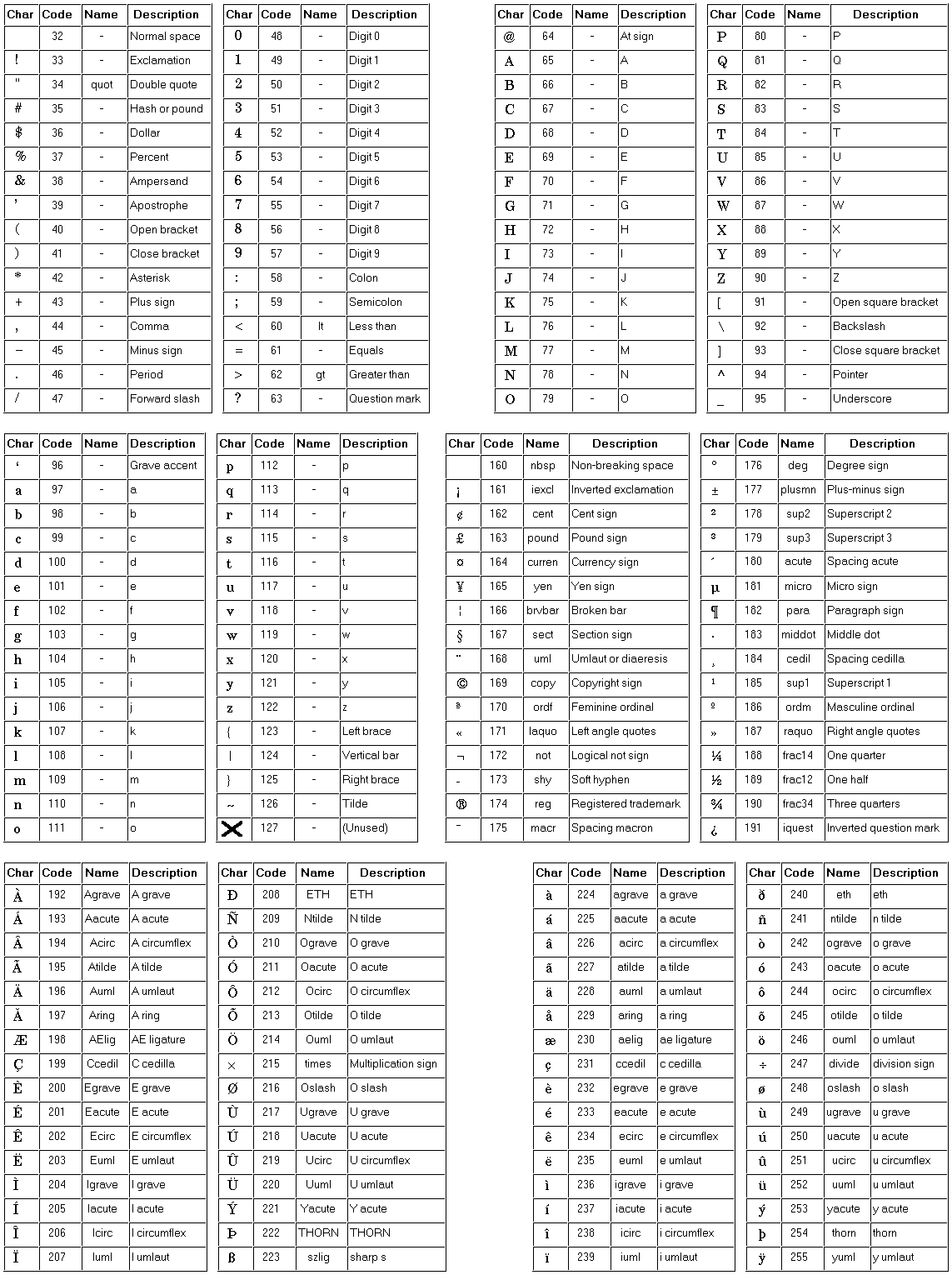ISO/IEC 8859
The family of standards ISO 8859, more specifically ISO / IEC 8859, the International Organization for Standardization defined currently in 15 adopted and a warped part of various standard 8- bit character sets for information technology.
General Structure of the character sets
- The first 128 positions are identical for all sub- standards and meet the characters from the 7 -bit US-ASCII set. 00hex to 1Fhex and 7Fhex provide control characters The meaning of these characters is not defined in this standard.
- 20hex to 7Ehex contain printable characters (letters, numerals, punctuation, ... )
- A0hex to BFhex contains mainly punctuation marks and special characters.
- C0hex to DFhex mainly contains uppercase letters.
- E0hex to FFhex mainly contains lowercase.
Comments
- The frequently used Latin-1 character set is identical to the first 256 characters of the Unicode character set.
- The newer Latin-9 character set ( ISO 8859-15 ) differs only at 8 positions of the Latin - 1 character set; include the general currency sign ¤ was replaced by the euro symbol €.
- The German special characters ( Ä = C4hex, ä = E4hex, Ö = D6hex, ö = F6hex, T = DChex, u = FChex and ß = DFhex ) are in all Latin -x character sets (ie not in the partial norms -5, - 6, -7, -8 and -11) available under each of the same code.
- The ISO 8859 standards are no longer actively developed by ISO / IEC. For the future, a progressive replacement of such fonts by ISO UCS, identical in content to the Unicode standard, expected. This is mainly in the form of UTF -8 encoding becoming more widespread.
- It was " ISO 8859-12 " set within the standard family no character set. The description has been temporarily used for two different suggestions, it has been decided but neither as a standard.
Table
At position A0hex is always breaking spaces ( engl. non breaking space ) and ADhex usually conditional hyphen (English soft hyphen ), which is visible only at the end of the line. Other empty fields are either not (yet) assigned or can not be displayed on the system used.
Additions and changes in the 2003 version of the standard. Not defined characters are highlighted in green.
Letters for the German language
The umlauts Ä, Ö, Ü, ä, ö, ü and the small sharp s are included in ten of the fifteen sub- standards. These are designated with Latin 1 to 10 Latin standards. Only in the standards for the alphabets -5 Cyrillic, Arabic -6, -7 Greek, Hebrew, -8, -11 Thai are the German special characters not available. In the ten sub- standards of the Latin group, the German letters are at the same positions in each case. A compatibility between these standards, at least for German language texts is given with it.





.gif)




